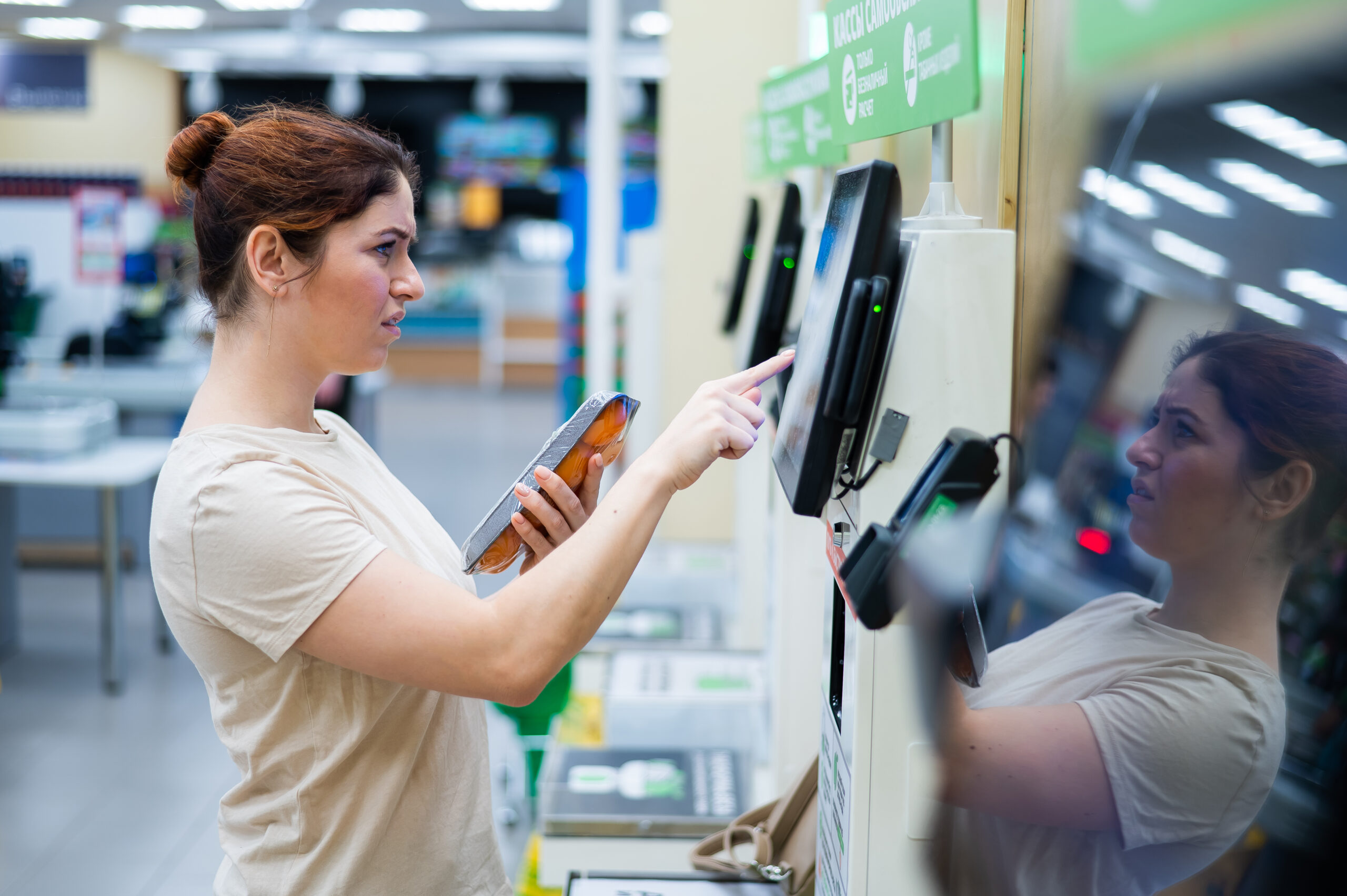So called “self-checkout” machines have become one of the most ubiquitous, and one of the most fraught, forms of new technology in grocery stores, pharmacies, and retail stores generally. The journey of self-checkout technology began on an optimistic note. When the first machines were introduced at Kroger stores in Atlanta in 1986, they were celebrated as a “revolution in the supermarket,” enthusiastically welcomed for its potential to reduce labor costs and shorten customer wait times (Puzo 1987). The adoption of self-checkouts skyrocketed during the Covid-19 pandemic, driven by public health concerns, and they remained a common fixture as the pandemic subsided (Food Industry Association 2022). However, as their presence grew, so did the challenges and frustrations associated with their use.
The manufacturers of self-checkout machines and the retailers that implement them often touted the benefits from both customer and business perspectives. For customers, the machines promise a speedy, convenient transaction that would enhance customer satisfaction (Toshiba 2024, Target 2024). For firms, the machines come with the prospect of cost-saving reductions in check-out personnel, enhanced flexibility in deploying labor elsewhere, and churning out customers faster (NCR 2019). Such technology could also shield workers from difficult customer interactions that can arise at checkout over bagging, forms of payment, and prices (Kinder and Lenhart 2019).
And yet anecdotes of customer frustration, dissatisfaction, and even rage in the face of self-checkout technology are easy to find. News articles indicate that during self-checkout, customers often encounter machine errors, experience significant frustration from the additional work required, and bemoan the lack of expected human touch in the service (Andrews 2018, Schulz 2023, Gibson 2024). Additionally, customers also express anger from increased accusations of theft, as shoplifting through intentional or accidental skipped scans is a prevalent and costly issue (Reuter 2023, Schulz 2023). Anti-theft measures on the machines further exacerbate these frustrations, as they often require workers to address constant false alarms, such as the notorious error of an “unexpected item in the bagging area” (Meyersohn 2022).
Due to frequent machine and human errors, self-checkout stations end up requiring regular maintenance and supervision by workers (Andrews 2018). When this technology goes wrong, it is often workers, potentially, depleted in their ranks, who are called on to fix it and to mollify irate customers (Kinder and Lenhart 2019). If self-checkout machines reliably substituted for human cashier workers, then reduced staffing would not necessarily be a problem. This kind of staffing reduction could reflect true technical substitution allowing a reduced workforce to still adequately meet business and customer needs. But, these anecdotes raise the question – have firms that have deployed self-checkout gone too far in reducing staffing, leading to understaffing?
We draw on novel data collected from over 14,000 workers at 135 of the largest service sector firms in the United States to provide one of the first examinations of the relationship between self-checkout machines, understaffing, and workers’ experiences of customer incivility.
Read the full report here.


